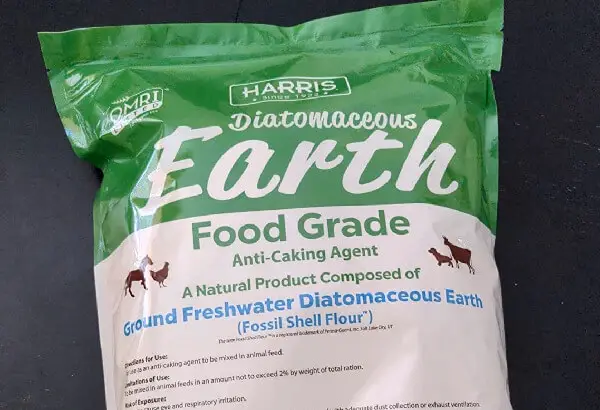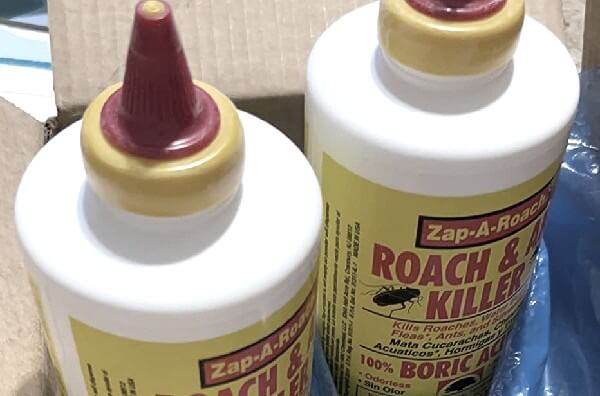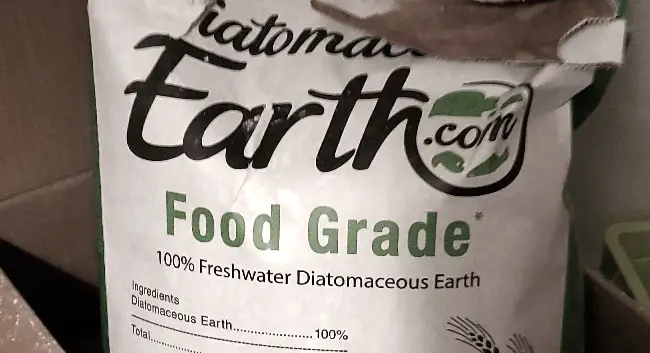Diatomaceous Earth vs Boric Acid

Hey there! Are you struggling with a pesky roach problem and not sure how to get rid of them? Well, you’re not alone! Many people wonder which is the better solution, diatomaceous earth or boric acid. Both of these methods are highly effective, but they have some significant differences.
Top Difference
- Diatomaceous Earth is made from the fossilized remains of diatoms, a type of algae, while Boric Acid is a white powder derived from the element boron.
- Diatomaceous Earth uses its sharp edges to dehydrate and damage the exoskeleton of insects. At the same time, Boric Acid is a slow-acting poison that interferes with the metabolism and nervous system of pests.
- Diatomaceous Earth can be used in larger areas, such as attics and basements, while Boric Acid is best used in small, enclosed spaces, such as cabinets and drawers.
- Diatomaceous Earth works faster than Boric Acid, achieving a 100% mortality rate after one week, while Boric Acid can take several days to several weeks to be fully effective.
Boric Acid vs Diatomaceous Earth
Both have pros and cons, but in this table post, we will break them down for you and help you decide which is the best option for your needs. Stay tuned!
Boric Acid | Diatomaceous Earth |
Active Ingredient Boric acid 98% | Active Ingredient Silicon Dioxide |
Not Natural But Not Harmful To Pet | 100% Natural & Pet Safe |
100% Mortality in 14 Days | 100% Mortality in 7 Days |
100% Pet to Use Around Pet and Humans | Safe on Plants and Gardens |
Only Requires Come Into Contact to Working | Only Requires Come Into Contact to Working |
Kills cockroach by Damaging Stomach and Nervous System | Kills cockroach by Damaging Exoskeleton & Dehydration |
Can Be Use Use Both Inside and Outside | Can Be Use Use Both Inside and Outside |
It Kills Kill Cockroaches, Ants, Fleas, Termites, Silverfish, Beetles, Fleas, Carpet Beetles, Wood Borers, and Other Parasites. | It Kills Cockroaches, Ants, Earwigs, Millipedes, Centipedes, Crickets, Silverfish, Fleas, Carpet Beetles, Bedbugs, Grasshoppers, Slugs and Other Crawling Insects |
Composition
Diatomaceous Earth is a powdery substance derived from the fossilized remains of diatoms, a type of algae. Its primary component, silica, contributes to its desiccant properties and mechanical action against pests.
On the other hand, Boric Acid is sourced from the mineral boron, which is found naturally in seawater, plants, and as a chemical derivative of borax.
It appears as a white powder that acts as a versatile ingredient in various products, including pest control formulations.

Mechanism of Action
The mechanism of action for Diatomaceous Earth (DE) is purely physical. It works by absorbing the lipids from the waxy outer layer of insects’ exoskeletons, causing them to dehydrate and die. The sharp edges of DE particles also contribute by puncturing the pests’ protective coverings.
Conversely, Boric Acid’s mechanism is chemical, acting as a slow-acting poison that disrupts pests’ digestive systems and metabolic processes. For it to be effective, the pest must ingest the boric acid, usually mixed with bait.
Application Areas
DE is best applied in dry, expansive areas such as attics, basements, and gardens. Its ease of application with a powder duster makes it a go-to option for covering large spaces efficiently.
Boric Acid excels in targeted, enclosed spaces where pests are known to frequent. It remains potent in damp conditions, making it versatile for both indoor and outdoor applications, especially in baits placed in strategic locations.

Effectiveness
DE boasts rapid action, with most pests succumbing within 7 days of contact. Its effectiveness relies on physical contact, making it a broad-spectrum option against a variety of pests.
Although slower, Boric Acid ensures a near 100% mortality rate within two weeks. Its strength lies in its long-lasting action, even in minimal quantities, making it a formidable option for persistent infestations.
Safety Feature
DE is non-toxic and safe around pets and children, recognized by the FDA as Generally Recognized as Safe (GRAS). However, the inhalation of dust can cause irritation, necessitating cautious application.
Boric Acid, while generally safe in small amounts, poses risks if ingested or inhaled in significant quantities. While not FDA-approved, it is widely regarded as a safer alternative to chemical pesticides when used correctly.

Pests Targeted
DE is versatile, effective against a wide range of insects, including roaches, bed bugs, fleas, and more. Its physical action makes it a universal tool in the pest control arsenal.
Boric Acid specializes in combating roaches and ants, benefiting from pests’ grooming behaviors to ensure ingestion. It also shows efficacy against a broader spectrum of pests, including fleas and silverfish.
Our Observation
Choosing between Diatomaceous Earth (DE) and Boric Acid depends on the environment, pest types, safety concerns, and cleanliness desired.
DE excels in dry, indoor areas, offering broad-spectrum efficacy and non-toxic safety, making it ideal for households seeking organic pest control solutions. It’s effective against a wide range of pests, including roaches, bed bugs, and fleas, due to its physical action.
Boric Acid, however, is more suited for damp environments or outdoors, excelling in combating roaches and ants with its long-lasting chemical action. It requires careful handling due to potential risks if ingested or inhaled but remains a potent option for persistent infestations.
Both offer effective, safer alternatives to chemical pesticides, with unique advantages based on specific needs. Considering the environment, pest type, and safety can guide the choice, enabling homeowners to manage pest control effectively while minimizing health risks and environmental impact.

